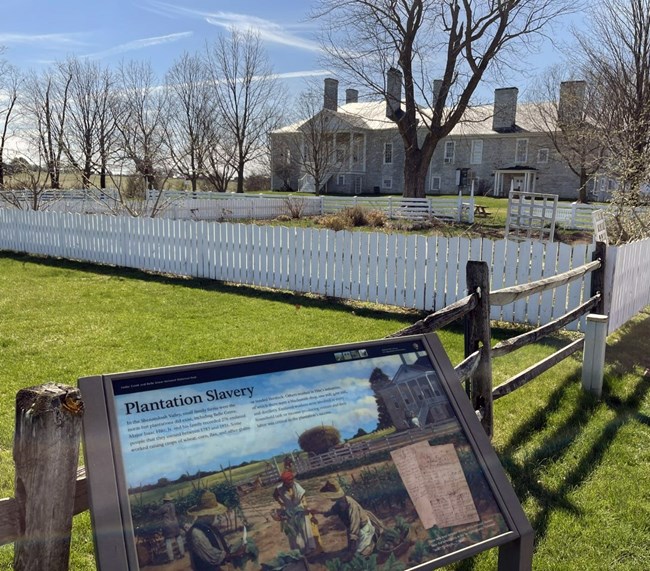Last updated: July 28, 2025
Article
Freedom Seekers at Belle Grove

NPS Photo
Belle Grove plantation relied on the labor of over 276 enslaved people between 1783 and 1852 during its peak as one of the largest farms in Frederick County, Virginia. They worked in the main house, extensive grain fields, and as skilled craftsmen. On several occasions, African Americans enslaved at Belle Grove took steps to attain their own freedom. Whether through escape, purchase by loved ones, or manumission, their stories are important to understanding the history of the plantation.
Four Escaped
At least four freedom seekers escaped from Belle Grove, as confirmed in various sources such as the Hite’s Commonplace Book. A receipt for a newspaper advertisement in November 1800 likely refers to a reward for information on a man named Primus. A few years later, another ad described Daniel, who was “about 5 foot 9 inches high, about 28 years of age, has a white spot on one of his cheeks, [with] rather a slender figure.” Daniel had, through the cooperation of a white man, obtained a certificate of emancipation under another name. That same decade, Isaac Hite Jr. placed another ad seeking the return of Daniel but also recording the escape of Henry, who had also obtained a certificate of freedom and was believed to be near Martinsburg. Finally, Jacob fled Belle Grove some time after 1824.
One Freed & Emanual Jackson's Family
We know of only one individual freed during the Hite family’s ownership of Belle Grove, as Isaac Hite Jr. freed 60-year-old Molly as he settled his deceased father’s estate in 1796. However, the story of freedom for the largest number of people centers around the actions of Emanual Jackson, a free African American man. Beginning in 1837, he purchased several of his children from the Hite family and took them to Pennsylvania. In 1841, one son’s legal Freedom Paper declared,
“I Emanual Jackson, of the Town of Birmingham, in the County of Allegheny (Pa.), but formerly of Frederick County (Va.), from motives of parental affection...do hereby manumit and set free from slavery, my son Emanual.”
While we continue to research the Jackson family and their story, it is a powerful story of the family ties in a system of slavery that often broke families apart.
Related Stories
Two additional stories are tied to Belle Grove, as Suckey had fled from another family property in 1789 before being returned and ultimately ending up at the plantation. Ambrose, who had been at Belle Grove until being sold out of town, escaped in 1819. After leaving his enslaver, he had been spotted around Belle Grove, likely because his friends, family, and community were there.
Network to Freedom
The Belle Grove Plantation Escape Site is listed on the National Underground Railroad Network to Freedom. The National Park Service and members of the Network to Freedom tell these stories of escape to demonstrate the significance of the Underground Railroad in eradicating slavery.
Visit Belle Grove Plantation
Belle Grove is an antebellum plantation begun in the 1700s and still is farmed today. It has a Jeffersonian-inspired Manor House, icehouse and smokehouse, enslaved burial ground, heritage apple orchard, teaching garden, and an early 1900s century barn, all set against a background of splendid mountain views.
Go to bellegrove.org for more information.
